Sustainability by Descending Order of Love
By Dani Robbins
Re-published with permission from nonprofitevolution blog
 The new normal has forced a lot of nonprofit leaders to rethink the way they do business. Crises, as unpleasant as they are to experience, allow for growth. I love Rahm Emanuel’s quote “Never let a good crisis go to waste.”
The new normal has forced a lot of nonprofit leaders to rethink the way they do business. Crises, as unpleasant as they are to experience, allow for growth. I love Rahm Emanuel’s quote “Never let a good crisis go to waste.”
The old normal, otherwise known as normal, to which we all ascribed went something like this: Have a diverse funding base. That way, if ever you lost a government grant, major donor, or foundation award, you could continue to provide services.
Then, as we all remember, the economic crisis of 2008/2009 came, with the compromise of every funding source we had and the end of life as we knew it.
It forced all of us to reassess.
So….what’s a good Executive Director and talented Board to do?
Change!
Think about every process and every assumption, put it on the table, look at it, talk about it and figure out if it still works for your organization. If it does, keep it. If it doesn’t, create a plan to evolve that process into one that better serves the organization and its need for revenue sustainability.
How do you work towards revenue sustainability? Some organizations do it with a consultant, some with a board member, some with a staff member or a donor.
Where do I start? I start with explaining the history of giving in the US and the fact that 80% of all financial gifts, grants and awards, including corporate and foundation giving, come from individuals. I then move on to explain that 80% of most non-profits’ income does not come from individuals.
What, then, do we have? Enormous Opportunity!
I then introduce the idea of descending order of love. Individual giving starts with the people who love you the most.
 Let’s get those people together and brain storm: Where are we today? Where do we want to go? How can we get there?
Let’s get those people together and brain storm: Where are we today? Where do we want to go? How can we get there?
Big gifts require big dreams and the capacity to engage people to help reach those dreams.
Get together and figure out your dreams, turn them into goals and then create a plan to meet those goals. Then, put together a list of current donors and a robust list of potential donors, also called prospects. Take a look at your current gift acceptance policies. (Revise or adopt as necessary) Once we have a goal, a plan, lists, and the requisite policies to increase the revenue for your organization, I move to descending order of love.
Your board, staff and major donors will be the foundation of any fundraising plan. Those who love you the most will support you the most. If sustainability were a board game, there would be a Start Here button.
Each board and staff member should make a significant gift. I can hear you thinking “Dani, significant is a fluid term.” Yes it is and that is intentional; my goal is always 100% Board and staff giving. It is critical that those closest to an organization financially support that organization. If they don’t, how can they ask someone else to?
Each board member should be asked in person for a specific gift, not the same gift as every other board member, but a specific gift o that board member which should be determined based what the staff and committee know about their capacity and level of engagement. If someone has enormous capacity but is not that engaged, a significant gift may be less than someone who has less capacity but is more engaged.
Who should do the asking? The person who is most likely to get a YES. Usually that’s another board member, but sometimes, it’s the Executive Director, or a volunteer.
Staff should also be asked to financially support the organization. Care should be taken to who should make that ask as well. I recommend a volunteer, because with fundraising and everything else, we want to avoid even the perception of impropriety.
Once we have 100% giving of staff and board, we move to our major donors and our prospect list and again, make specific in person asks. Prospects should be appropriately cultivated before they are asked for financial support. The definition of appropriate will change based on the individual and the need.
I consider major donors to be the top 10% of givers to your organization. It may be $250, it may be $25,000. It may be more and it may be less. If we continued to play our sustainability board game, there would be a This Way arrow here.
After major donor solicitation are completed, if you have the time and the volunteers, consider asking your larger mid level donors and prospects in person. Then move into your actual mid level donors and prospects. Those with the potential to become major donors should also be asked in person as should anyone who is committed to your organization. While we follow the path of descending order of love in planning, we love all of our donors equally. If someone would like to see you in person, even if it will be a small gift, go. It is fun to thank someone in person and is worth keeping a committed donor engaged. When that is not practical, the next best thing is a phone banks or phone calls.
Our Board game and our plan for income sustainability ends with an appeal letter to those who have not yet been asked or have been asked but have not given and also haven’t said no.
I invite you follow the descending order of love of path to sustainability. Please let me know how it goes. As always, I welcome your feedback.


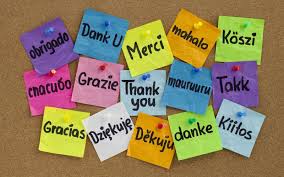 As many of you know, I’m on a temporary assignment for the next few months working with a group of 20 non-profit organizations throughout New Mexico and West Texas. Last night was my first site visit, and the executive director did something that inspired this morning’s post about personal (yet simple) ways to thank your donors.
As many of you know, I’m on a temporary assignment for the next few months working with a group of 20 non-profit organizations throughout New Mexico and West Texas. Last night was my first site visit, and the executive director did something that inspired this morning’s post about personal (yet simple) ways to thank your donors. This is what I saw:
This is what I saw: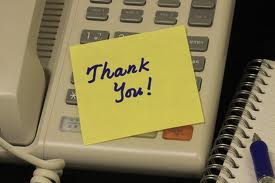 In recent weeks, I’ve started receiving phone calls from board volunteers thanking me for my support of their agency.
In recent weeks, I’ve started receiving phone calls from board volunteers thanking me for my support of their agency.
 Sometimes I hear something that hits me just right, and it takes days to get it out of my head. This happened on Tuesday during the Fox West Philanthropic Network’s
Sometimes I hear something that hits me just right, and it takes days to get it out of my head. This happened on Tuesday during the Fox West Philanthropic Network’s  Dani suggested that board volunteers who are “strategic thinkers” will have an easier time making the transition from traditional fiduciary modes of governance to more strategic and generative modes.
Dani suggested that board volunteers who are “strategic thinkers” will have an easier time making the transition from traditional fiduciary modes of governance to more strategic and generative modes. If you’re scratching your head while reading this list and asking “what does THAT mean,” then click the link and read the CEB Blog post. It really is quite good. If you want to learn more, then I suggest you start Googling around. 😉 You also might want to
If you’re scratching your head while reading this list and asking “what does THAT mean,” then click the link and read the CEB Blog post. It really is quite good. If you want to learn more, then I suggest you start Googling around. 😉 You also might want to  Sorry about not being able to post yesterday, but it was a crazy busy day because I was one of the co-chairs for
Sorry about not being able to post yesterday, but it was a crazy busy day because I was one of the co-chairs for  Positioning Your Board for More Effective Fundraising
Positioning Your Board for More Effective Fundraising Lunch: Celebrating 100 years of philanthropy
Lunch: Celebrating 100 years of philanthropy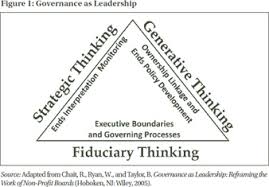 Dani is a big fan of Richard Chait and talked a lot about his
Dani is a big fan of Richard Chait and talked a lot about his  Don’t look now, but we are seven weeks away from drinking champagne and celebrating the end of 2013 and the start of a Happy New Year 2014. It is this time of the year when non-profit organizations are super busy. Many of you are closing out your fiscal year, and almost every non-profit with a pulse is executing its year-end giving strategy.
Don’t look now, but we are seven weeks away from drinking champagne and celebrating the end of 2013 and the start of a Happy New Year 2014. It is this time of the year when non-profit organizations are super busy. Many of you are closing out your fiscal year, and almost every non-profit with a pulse is executing its year-end giving strategy. I just finished helping a client with their year-end mail appeal. The executive director called on Friday to report the letters were delivered to the post office and we both did a little happy dance. The next thing on his year-end fundraising task list is preparing for the phone-a-thon follow-up the week of Thanksgiving.
I just finished helping a client with their year-end mail appeal. The executive director called on Friday to report the letters were delivered to the post office and we both did a little happy dance. The next thing on his year-end fundraising task list is preparing for the phone-a-thon follow-up the week of Thanksgiving.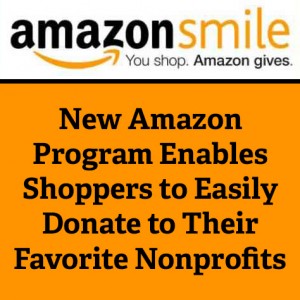 Holiday shopping appeals
Holiday shopping appeals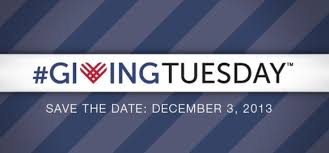 #GivingTuesday
#GivingTuesday I am a member of Gen-X, and I behave like a typical person of that generation especially when it comes to my mailbox. I hate going to the mailbox. I hate opening mail because 99.9% of it is junk. Anything important comes to me via email, and all of my bills and charitable giving is set-up using automatic bill pay. So, imagine my surprise the other day when I was opening a three-week stack of mail, and I came across a handwritten envelope from one of my favorite local charities.
I am a member of Gen-X, and I behave like a typical person of that generation especially when it comes to my mailbox. I hate going to the mailbox. I hate opening mail because 99.9% of it is junk. Anything important comes to me via email, and all of my bills and charitable giving is set-up using automatic bill pay. So, imagine my surprise the other day when I was opening a three-week stack of mail, and I came across a handwritten envelope from one of my favorite local charities.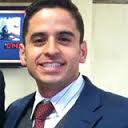 It happens every year. My partner and I get a phone call from Cindy, who is Ernie Gamino’s assistant, and she asks us to please schedule a year-end sit down meeting. Ernie is our Edward Jones financial advisor, and getting time in both of our calendars is a challenge. However, we found some time this past Saturday. I’m glad we did because I discovered that Ernie is a really good fundraising professional, who has never been trained as one or worked at a non-profit organization. We can all learn a lot from Ernie and his colleagues.
It happens every year. My partner and I get a phone call from Cindy, who is Ernie Gamino’s assistant, and she asks us to please schedule a year-end sit down meeting. Ernie is our Edward Jones financial advisor, and getting time in both of our calendars is a challenge. However, we found some time this past Saturday. I’m glad we did because I discovered that Ernie is a really good fundraising professional, who has never been trained as one or worked at a non-profit organization. We can all learn a lot from Ernie and his colleagues. I started the meeting off by growling at poor Ernie. I wanted to know why this annual meeting is necessary? Can’t he just go about doing his job and call me when he needs to get permission to do something with my investment portfolio.
I started the meeting off by growling at poor Ernie. I wanted to know why this annual meeting is necessary? Can’t he just go about doing his job and call me when he needs to get permission to do something with my investment portfolio.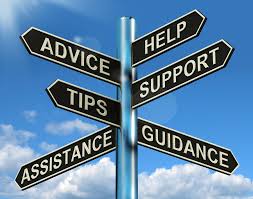 We talked about his Northern Illinois University (NIU) football team and the state of the BCS football system.
We talked about his Northern Illinois University (NIU) football team and the state of the BCS football system.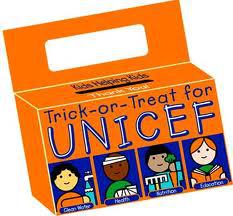 I just love this time of the year. The temperature outside is lovely. Trees are turning colors and putting on a show. Charity is coming into focus for millions of Americans. Last year approximately 174 million Americans donated approximately $50 billion to charities during the holiday season. While most resource development people will tell you this all starts with Thanksgiving, I contend that Halloween is when the starters gun goes off in my head.
I just love this time of the year. The temperature outside is lovely. Trees are turning colors and putting on a show. Charity is coming into focus for millions of Americans. Last year approximately 174 million Americans donated approximately $50 billion to charities during the holiday season. While most resource development people will tell you this all starts with Thanksgiving, I contend that Halloween is when the starters gun goes off in my head. I love Monday mornings! I wake up, feed the dog and cat, grab a cup of coffee, sit down at my computer and open my email, and most Monday mornings involves watching “
I love Monday mornings! I wake up, feed the dog and cat, grab a cup of coffee, sit down at my computer and open my email, and most Monday mornings involves watching “